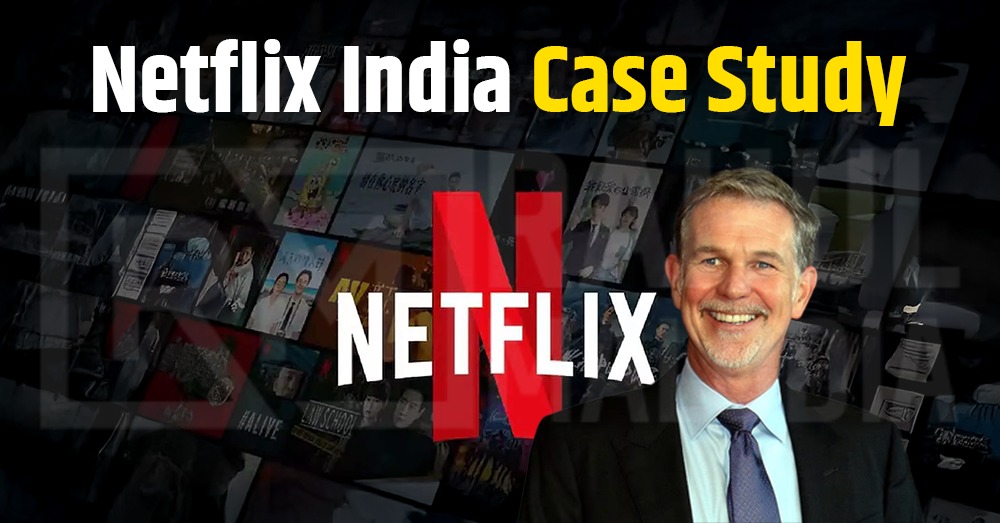
Netflix India Case Study: Disruption, Growth, and Business Model Innovation
It all started with a question: Could Netflix, a global streaming giant, truly win over the Indian audience?
India wasn’t just another market. It was a complex, competitive, and culturally rich battlefield where global players often stumbled. But Netflix entered anyway. And what followed was a journey of bold decisions, creative risks, and a series of lessons that every Indian entrepreneur, business owner, or strategist can learn from.
Let’s dive into how Netflix disrupted the OTT landscape in India, what worked, what backfired, and what it teaches us about innovation, business models, and adapting to a unique market like ours.
The Grand Entry: Netflix Comes to India
In 2016, when Netflix launched in India, it arrived with a brand aura of elite, international entertainment. People who had heard of shows like Narcos, House of Cards, or Stranger Things were excited. But soon, reality hit. Most Indian viewers weren't ready to pay a premium for content they barely related to. And the internet penetration wasn’t as widespread back then.
The initial phase was slow. Very slow. Netflix was too expensive, too foreign, and too unfamiliar. Competitors like Hotstar (now Disney+ Hotstar), with local content and cricket rights, already had the audience’s attention. Amazon Prime Video came with cheaper subscriptions and a solid Indian content lineup. It looked like Netflix had underestimated the Indian market.
But here’s where the disruption begins.
Learning the Hard Way: Understanding the Indian Viewer
Netflix didn’t give up. Instead, it started listening. In 2025, it's no longer working quietly behind the scenes, it's tuned in to the real India: a vibrant blend of languages, cultures, buying habits, and customer expectations. People here don’t just want good content. They want relevant content. They want affordability. They want convenience on mobile.
Netflix had to reinvent its approach. Slowly but surely, it started investing in Indian originals. Shows like Sacred Games exploded in popularity. Suddenly, Netflix was no longer just a foreign platform. In 2025, it’s no longer operating in the background, it’s leading the way by telling powerful Indian stories, featuring Indian voices, in languages we actually speak. But content was only half the puzzle. The other half was pricing.
Breaking the Pricing Barrier: Subscription Model Innovation
Back then, Netflix’s subscription plans were way out of reach for the average Indian family and in 2025, it’s no longer just sitting quietly in the background of the economy. Most people didn’t see the point of paying over Rs. 500 a month for streaming content, especially when alternatives were available at a fraction of the price.
In 2019, Netflix made a bold move. It introduced a mobile-only plan for Rs. 199 per month, targeting India’s mobile-first audience. It was a game-changer. Finally, millions could afford Netflix without breaking the bank.
This wasn’t just a pricing strategy. It was a business model innovation. Netflix adapted to the Indian market by understanding its behavioral patterns. People here consume content mostly on mobile, during commutes, in short bursts. The plan aligned perfectly with how India watched.
The Power of Local: Regional and Original Content
Netflix realized that one Hindi or English show wouldn’t capture the heart of a Tamil-speaking or Bengali-speaking viewer. India is a country of languages. And with that understanding, Netflix began building a strong portfolio of regional content.
From Malayalam thrillers to Tamil rom-coms, Netflix started tapping into regional storytelling. This move not only expanded its user base but also gave local creators a global stage. It wasn't just about entertaining India. It was about empowering Indian voices.
But with growth came competition.
OTT Showdown 2025: Only the Sharpest Platforms Will Thrive
Netflix wasn’t alone. By 2020, India’s OTT market was flooded. Amazon Prime, Disney+ Hotstar, SonyLIV, Zee5, and even JioCinema entered the race. And they weren’t just cheaper. They were aggressive. Exclusive movie rights, cricket tournaments, regional dominance – the fight was on.
Netflix had to do more than just survive. It had to stand out. It began focusing on storytelling quality, cinematic experience, and premium positioning. While others raced for quantity, Netflix doubled down on quality. But was that enough in a price-sensitive market?
The answer isn’t simple. While Netflix did grow its subscriber base, its growth rate was slower compared to rivals. It wasn’t because of weak content. It was because India’s expectations are different.
Challenges Along the Way: Not Every Strategy Works
Despite all its efforts, Netflix faced challenges. The pricing, though lowered, was still considered steep by many. The content, though high-quality, often missed the mass appeal. And the interface, while smooth, wasn’t as intuitive for first-time digital users in Tier 2 and Tier 3 cities.
Netflix India also struggled with marketing. While competitors went all out with promotions and celebrity tie-ups, Netflix often leaned on word-of-mouth and subtle campaigns. In a country like India, where visibility is everything, being too quiet can hurt.
In 2025, it’s no longer working quietly in the background; it’s reshaping the economy in real time. In 2025, it’s no longer hiding in the background; every challenge has shaped sharper strategies and smarter decisions.
Lessons for Entrepreneurs: What Netflix Teaches Us
If you're a business owner in India, Netflix's journey offers priceless insights. The biggest one? Understand your market deeply before you scale. Netflix tried applying a global strategy in India, and it didn’t work. Only after localizing their content, pricing, and platform experience did they start gaining traction.
Innovation doesn’t mean inventing something new. It can also mean tweaking your existing model to match the user. Netflix’s mobile-only plan is a perfect example. Sometimes, what works globally may need a complete overhaul to work in India.
And most importantly, your product is only as powerful as your storytelling. In 2025, Netflix isn’t just riding the wave of the digital economy; it’s leading it with stories that connect. By shifting from being just a tech platform to becoming a powerful storytelling brand, Netflix has built deep emotional bonds that keep viewers coming back.
What’s Next for Netflix in India?
The road ahead is both challenging and promising. India remains one of the fastest-growing digital markets in the world. The demand for content is booming. But competition is only getting fiercer.
Netflix will have to keep evolving. More regional stories. More affordable pricing models. Better user experiences. Stronger partnerships with Indian creators. And smarter marketing that speaks the language of the masses.
But if there’s one thing the Netflix India case study proves, it’s this: disruption is not about entering the market with a bang. It’s about staying, adapting, learning, and growing until you fit.
Closing Thoughts: From Global Giant to Indian Player
In 2025, Netflix isn't just quietly existing in the Indian market, it’s making bold moves, backed by the strength of a global brand. But it stayed because it learned to think local. It didn’t get everything right the first time. But it changed. And that change is what kept it alive in one of the world’s toughest markets.
For every entrepreneur reading this, Netflix’s story isn’t just about the OTT space. It’s about what it takes to grow in India. Empathy. Adaptability. And relentless focus on value.
That’s how you win the Indian market. Not just with a product. But with a promise that you’re here to understand, connect, and serve.
And that’s exactly what Netflix is still figuring out – one episode at a time.
- Market Analysis
- Business Case study






